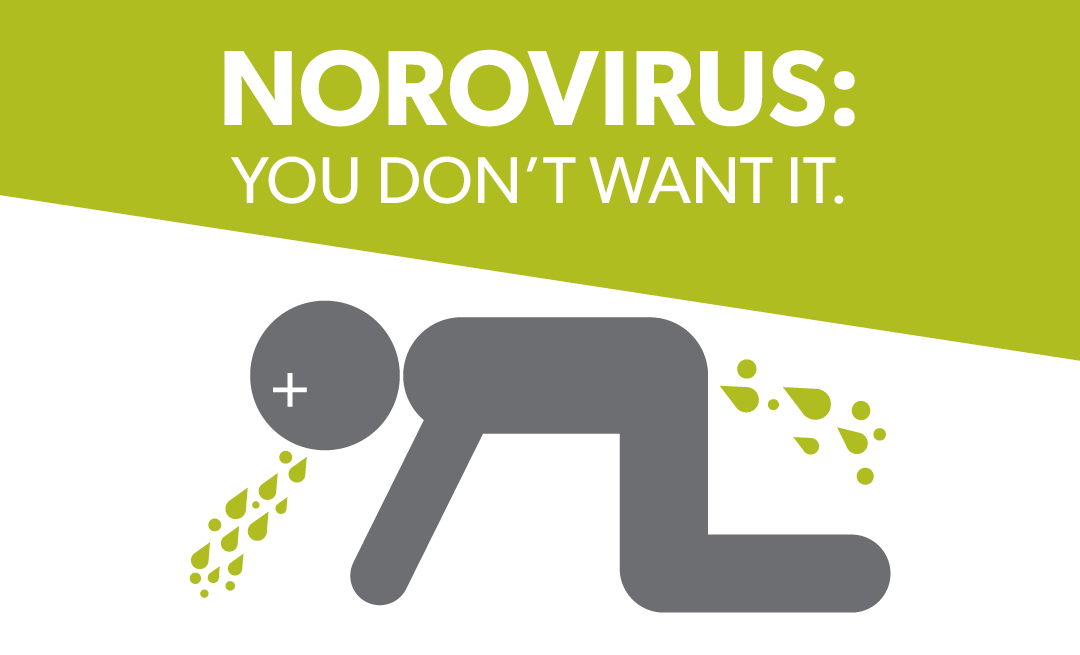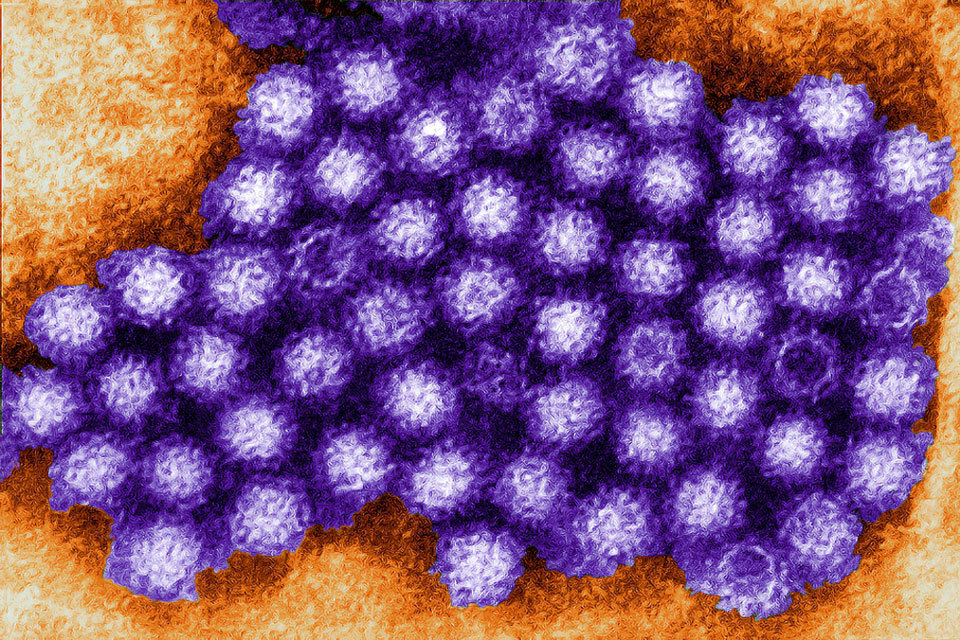Norovirus
Norovirus, often referred to as the “stomach bug” or “winter vomiting bug,” is a highly contagious virus that can cause gastroenteritis, an inflammation of the stomach and intestines. It is one of the most common causes of viral gastroenteritis worldwide. Norovirus infections can occur at any time of the year, but they are more prevalent during the colder months, hence the nickname “winter vomiting bug.”
Types:
There are several types of norovirus, but they all belong to the Norovirus genus within the Caliciviridae family. The most common types of genogroups of norovirus that affect humans are:
- Norovirus Genogroup I (GI): This genogroup includes several different strains of norovirus that can infect humans. GI strains are often associated with outbreaks of gastroenteritis and can cause a wide range of symptoms.
- Norovirus Genogroup II (GII): Genogroup II is the most common and diverse genogroup of norovirus that infects humans. It is responsible for the majority of norovirus outbreaks worldwide. GII strains are further divided into subgroups, such as GII.4, GII.6, GII.7, etc., with GII.4 being the most frequently detected and associated with severe outbreaks.
- Norovirus Genogroup IV (GIV): GIV strains of norovirus are less common in humans but can still cause illness. They have been associated with sporadic cases and outbreaks of gastroenteritis.
- Norovirus Genogroup V (GV): GV strains are typically found in animals and have been less frequently associated with human infections. However, there have been some reported cases of GV infecting humans.
- Norovirus Genogroup VI (GVI): GVI strains have been primarily detected in mice and have not been commonly associated with human infections.
Transmission:
Norovirus is a highly contagious virus that is a common cause of gastroenteritis, which leads to symptoms like vomiting, diarrhea, and stomach cramps. It can be transmitted through several routes:
- Person-to-Person: Norovirus is primarily spread from an infected person to others. This can occur through direct contact, such as shaking hands with someone who has the virus, or through contact with surfaces or objects contaminated with the virus, like doorknobs, handrails, or bathroom fixtures. People infected with norovirus can shed the virus in their feces and vomit, which can then contaminate surfaces and objects.
- Consuming Contaminated Food and Water: Norovirus can also be transmitted through the consumption of contaminated food and water. This can happen if food is prepared or handled by an infected person who didn’t practice proper hygiene, or if contaminated water is used for drinking, cooking, or washing food.
- Aerosolized Particles: Norovirus can become aerosolized when an infected person vomits. Tiny particles of the virus can become airborne and potentially infect others who breathe in the contaminated air. This is a less common route of transmission but can occur in certain settings, such as healthcare facilities or cruise ships.
- Shellfish and Raw Produce: Norovirus outbreaks are sometimes linked to the consumption of raw or undercooked shellfish, such as oysters, that have been harvested from contaminated waters. It can also be transmitted through contaminated fruits and vegetables that have been in contact with contaminated water or have been handled by infected individuals.
- Close Contact and Crowded Settings: The virus is more easily spread in crowded or enclosed settings, such as schools, daycare centers, nursing homes, cruise ships, and restaurants, where people are near each other. This facilitates person-to-person transmission and contamination of surfaces.
- Viral Persistence: Norovirus is known for its ability to persist on surfaces for extended periods, making it easier for people to come into contact with the virus even hours or days after it was initially deposited.
Incubation period:
The incubation period for norovirus is typically 12 to 48 hours after exposure. This means that people who become infected may not develop symptoms until a day or two after being exposed to the virus.
Symptoms:
Norovirus, often referred to as the “stomach flu” or “winter vomiting bug,” is a highly contagious virus that can cause gastroenteritis, leading to symptoms such as:
- Nausea: Nausea is often one of the earliest symptoms of norovirus infection. It may be mild initially but can become severe.
- Vomiting: Norovirus is known for causing sudden and forceful vomiting. This symptom can be quite intense and persistent.
- Diarrhea: Diarrhea is another hallmark symptom of norovirus infection. It can be watery and frequent, leading to dehydration.
- Stomach Cramps: Abdominal cramps or stomach pain can accompany norovirus infection and may range from mild discomfort to severe.
- Fever: Some people with norovirus may develop a low-grade fever, typically less than 100°F (37.8°C).
- Headache: Headaches can be a symptom of norovirus infection, often associated with the general discomfort of the illness.
- Muscle Aches: Muscle aches and fatigue can occur as part of the illness, contributing to an overall feeling of malaise.
- Chills: Some individuals with norovirus may experience chills, especially if they have a fever.
- Fatigue: The combination of vomiting, diarrhea, and other symptoms can lead to significant fatigue.
- Dehydration: Due to the loss of fluids through vomiting and diarrhea, dehydration is a common concern with norovirus infection. Signs of dehydration include dry mouth, decreased urine output, and dizziness.
It’s important to note that norovirus symptoms typically appear 12 to 48 hours after exposure to the virus and can last anywhere from 1 to 3 days. While most people recover without medical treatment, it’s crucial to stay hydrated to prevent severe dehydration, especially in vulnerable populations like young children and the elderly.
Prevention:
Here are some preventive measures to reduce the risk of norovirus infection:
- Practice Good Hand Hygiene:
- Wash your hands thoroughly with soap and water for at least 20 seconds, especially after using the toilet, changing diapers, and before eating or preparing food.
- Use hand sanitizer with at least 60% alcohol if soap and water are not available.
- Proper Food Handling:
- Wash fruits and vegetables thoroughly before eating or cooking.
- Cook seafood and shellfish thoroughly, as norovirus can survive in undercooked seafood.
- Avoid preparing food for others if you are sick with norovirus symptoms or have recently recovered from the illness.
- Safe Water Practices:
- Use safe, clean water sources for drinking and cooking.
- Avoid swallowing water while swimming in pools, lakes, or other recreational water sources.
- Disinfect Contaminated Surfaces:
- Norovirus can survive on surfaces for extended periods. Clean and disinfect frequently touched surfaces and objects regularly, especially in areas with known outbreaks.
- Isolation and Quarantine:
- If you or someone you know is sick with norovirus symptoms, it’s essential to isolate yourself or the affected person to prevent further spread.
- Stay home from work, school, or public gatherings until at least 48 hours after symptoms have resolved.
- Education and Awareness:
- Educate yourself and others about norovirus and its symptoms to promote early recognition and appropriate actions.
- Encourage proper hand hygiene and sanitation practices in your community.
- Vaccination (if available):
- Currently, there is no specific vaccine for norovirus available to the general public. However, research is ongoing, and vaccines may become available in the future, particularly for high-risk populations.
- Travel Precautions:
- If traveling, especially on cruise ships or in areas with a high risk of norovirus outbreaks, practice good hygiene and follow sanitation recommendations provided by the travel operators.
- Healthcare Facilities:
- In healthcare settings, strict infection control measures, such as isolation of infected patients and proper sanitation, are crucial to prevent outbreaks.
- Childcare Facilities and Schools:
- Enforce strict hygiene practices among children and staff, including handwashing and cleaning of toys and surfaces.
- Exclude sick children and staff from attending until they are symptom-free for at least 48 hours.
Treatment:
There is no specific antiviral medication to treat norovirus infections, the primary focus of treatment is on managing symptoms, preventing dehydration, and minimizing the spread of the virus. Here are some key steps for the treatment and management of norovirus:
- Hydration: The most important aspect of norovirus treatment is staying hydrated. Frequent vomiting and diarrhea can lead to dehydration, which can be particularly dangerous for young children, the elderly, and individuals with weakened immune systems. Drink clear fluids, such as water, oral rehydration solutions, clear broths, and electrolyte drinks, to replace lost fluids and electrolytes.
- Rest: Rest is essential to help your body recover from the infection and conserve energy.
- Avoid Certain Foods: Avoid dairy products, caffeine, alcohol, and fatty or spicy foods until your symptoms have improved. These substances can irritate your stomach and make symptoms worse.
- Maintain Good Hygiene: Norovirus is highly contagious and can spread through close contact with infected individuals, contaminated surfaces, and contaminated food or water. To prevent the spread of the virus, practice good hand hygiene by washing your hands with soap and water for at least 20 seconds frequently, especially after using the restroom and before preparing or handling food.
- Isolation: If you have norovirus, it’s crucial to isolate yourself from others until at least 48 hours after your symptoms have resolved to prevent spreading the virus. This is especially important in settings like healthcare facilities, schools, and daycare centers.
- Disinfection: Clean and disinfect surfaces that may be contaminated with norovirus, including countertops, doorknobs, and bathroom fixtures, using a chlorine bleach-based disinfectant.
- Over-the-counter Medications: Over-the-counter anti-diarrheal medications, such as loperamide (Imodium), may help relieve diarrhea but should be used cautiously and under the guidance of a healthcare professional. These medications can prolong the infection if not used appropriately.
- Seek Medical Attention: While norovirus infections typically resolve on their own within a few days, some individuals, especially those with weakened immune systems or underlying health conditions, may experience severe symptoms or complications. If you or a loved one experiences severe dehydration, persistent vomiting, bloody stools, high fever, or other concerning symptoms, seek medical attention promptly.
Preventing norovirus infection is as important as treating it. Practicing good hygiene, such as frequent handwashing, proper food handling and preparation, and avoiding contact with infected individuals, can help reduce the risk of contracting and spreading the virus.




[…] various factors such as trauma, stress, genetics, and certain foods. Since they are not caused by a contagious virus, you cannot “catch” canker sores from someone else through close contact or sharing […]
[…] important to note that the urine alcohol level may not directly correlate with the current blood alcohol concentration (BAC), as alcohol is […]
[…] (TB) is primarily spread through the air when an infected person with active TB disease releases the […]
[…] can also spread through improper food heating, poor hygiene practices, or contact with infected […]
[…] Inflammation: Omega-3s have anti-inflammatory properties and can help with conditions like rheumatoid arthritis. […]
[…] Inconclusive Result: Sometimes, the test may yield inconclusive results due to various reasons, such as sample quality i… […]